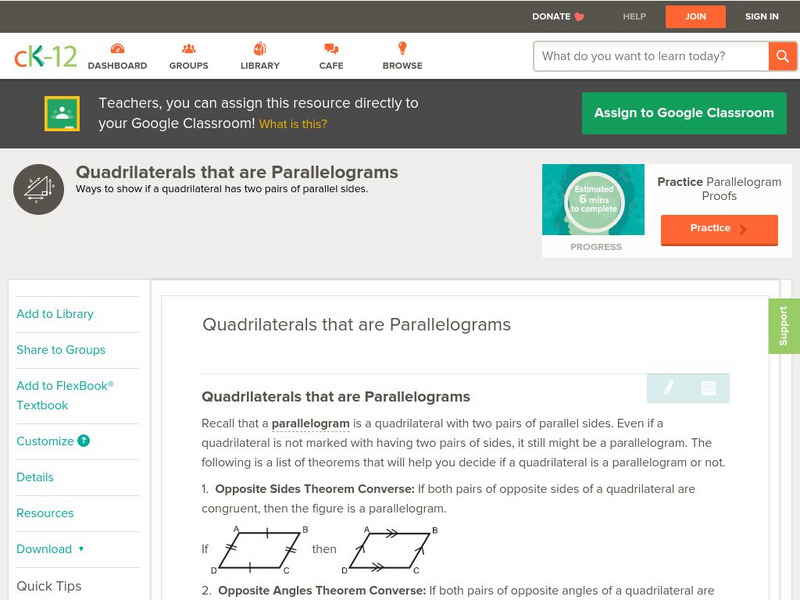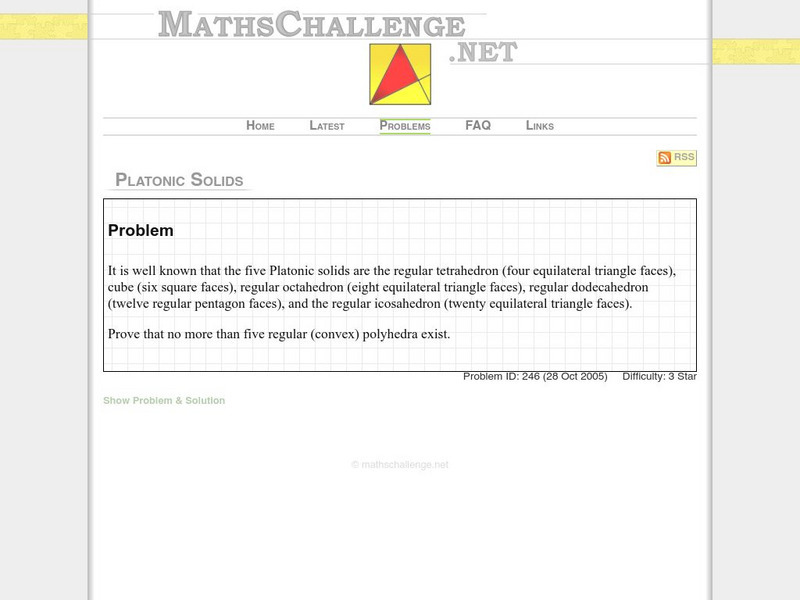Texas Instruments
Texas Instruments: Properties of Parallelograms
In this activity, students go through the process of proving a quadrilateral to be a parallelogram. They understand the various characteristics of a parallelogram.
CK-12 Foundation
Ck 12: Geometry: Quadrilaterals That Are Parallelograms
[Free Registration/Login may be required to access all resource tools.] This concept teaches students how to prove that a quadrilateral is a parallelogram given the properties of parallelograms.
CK-12 Foundation
Ck 12: Geometry: Quadrilaterals That Are Parallelograms
[Free Registration/Login may be required to access all resource tools.] Prove a quadrilateral is a parallelogram.
Maths Challenge
Maths challenge.net: Quadrilateral Parallelogram
A "three star geometry problem" requiring knowledge of how to complete geometric proofs and some prior math knowledge. This problem asks to prove that the mid points of any quadrilateral form a parallelogram.
Texas Education Agency
Texas Gateway: Making Conjectures About Quadrilaterals
Given examples of quadrilaterals and their component parts, the student will use explorations and concrete models to prove a quadrilateral is a parallelogram, rectangle, square, or rhombus using opposite sides, opposite angles, or...
Texas Instruments
Texas Instruments: Perimeters, Areas, and Slopes Oh, My!
In this activity, students create geometric figures, and use analytic and coordinate geometry to investigate their attributes. They go through the process of proving that a quadrilateral is a parallelogram.
Maths Challenge
Maths challenge.net: Platonic Solids
A "three star geometry problem" requiring knowledge of how to complete geometric proofs to prove that there are no more than five regular convex polyhedra.






